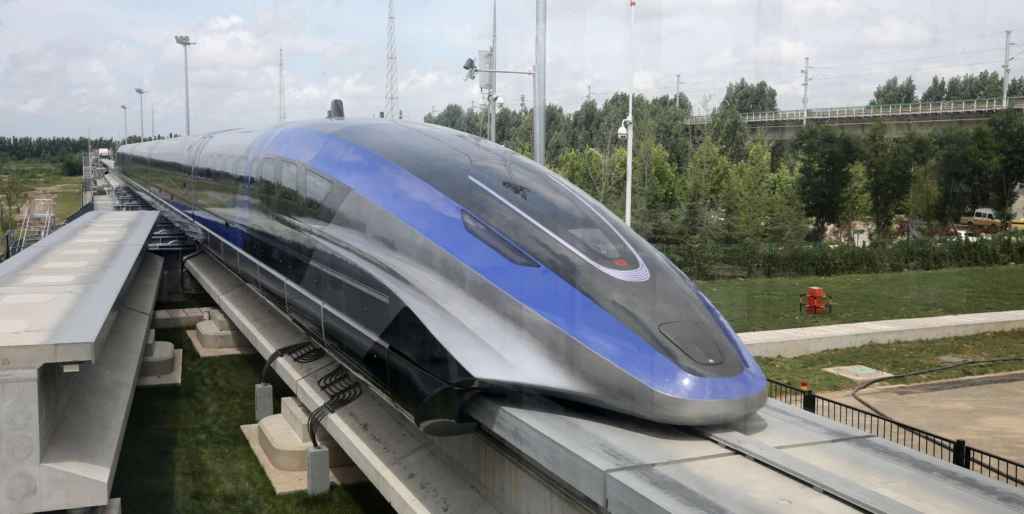China has introduced its fastest ground transport vehicle yet – a state-of-the-art maglev train capable of hitting 600 km/h (373 mph). The high-speed marvel made its public debut at the 17th Modern Railways exhibition in Beijing, drawing global attention to China’s relentless push in high-speed rail technology.
Built for Speed and Precision
Developed by the China Railway Rolling Stock Corporation (CRRC), the train features:
- A sleek aerodynamic body
- Pointed nose design to reduce air drag
- A futuristic interior with high-tech displays
With this design, it aims to provide aeroplane-level speed while retaining the comfort, punctuality, and safety of traditional rail.
Faster Than High-Speed Rail, Cheaper Than Flights
Once deployed, the maglev is expected to cut Beijing-Shanghai travel time from 5.5 hours to just 2.5 hours. Covering 1,200 km at top speed, this train could reshape business and tourism travel in China.
The train is specifically aimed to “fill the gap between high-speed rail and air travel for journeys under 2,000 km,” said CRRC engineer Shao Nan. That makes it ideal for point-to-point travel between major cities.
Engineering Milestones and Next Steps
The first phase of engineering was completed in July 2023. While the public unveiling marks a key milestone, the train is still undergoing:
- Route feasibility assessments
- Safety and engineering tests
- Infrastructure evaluations for commercial rollout
These steps are critical before mass deployment begins across China’s extensive railway network.
China’s Maglev Ambition: Global Leadership in Rail Innovation
China already boasts the world’s largest high-speed rail network, and this maglev sets the stage for the next evolution. It underscores China’s ambition to dominate the future of ground transportation while offering a green, fast, and efficient alternative to short-haul flights.
As the world watches, China’s maglev dream inches closer to commercial reality – with the potential to redefine travel across Asia and beyond.
